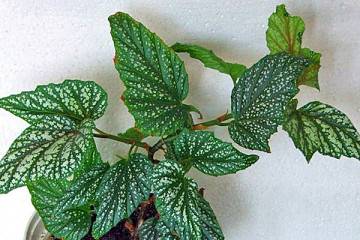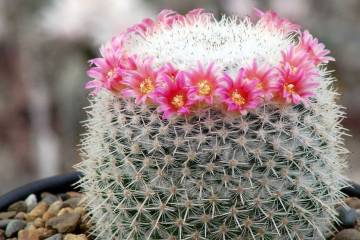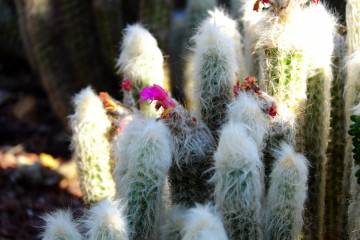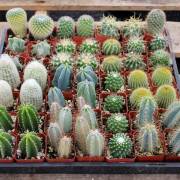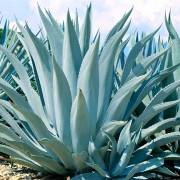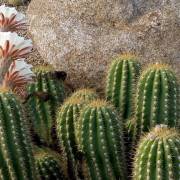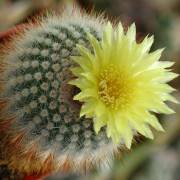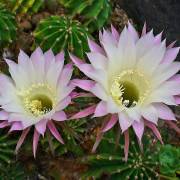Astrophytum cactus - planting and home care
Content:
The astrophytum cactus is a desert plant, the birthplace of which is Mexico. In translation, the name sounds like "plant star". At the moment, there are many subspecies of this plant, which are gaining more and more popularity among flower growers. Caring for such a flower is not difficult, since cacti are adapted to various natural conditions.
What does the astrophytum cactus look like?
Astrophytum belongs to the Cactus family. This flower differs from other species by the presence of light dots on the stem. They are small islands of hair that absorb moisture. The trunk of the astrophytum is brown-green in color. Spines are rare. Blooms in the summer. In the structure of the flower, ray ribs are traced, the number of which is from 3 to 10. Areoles are located along the apex of the rib.
Common varieties
Astrophytum Mirostigma is one of the most common varieties. It is a globular cactus in gray-blue color. The upper part is slightly depressed inward. There are 6 ribbed sides. There are many dots, but there are no thorns.
Astrophytum Myriostigma has several subspecies. One of them is Nudum. This cactus is distinguished by the absence of points for absorbing moisture. The shape is spherical, the edges are slightly highlighted.
Kikkos are 5-rayed cacti that resemble a star. They also have virtually no stains.
Star astrophytum attracts attention with its diminutiveness and easy maintenance. The ribs of such cacti 8. Astrophytum Asterias on each face has many points, which are larger than those of astrophytum polyphenylaceous. The flower also has no thorns.
Astrophytum speckled has a smooth surface, on which there are many fleecy dots. Outwardly, there are similarities with Mirostigma, but the speckled 5 ribs. In nature, a cactus reaches 25 cm in diameter.
Astrophytum ibex is included in the ranking of the most beautiful varieties. There are thorns on the cactus that grow in whole rosettes on the edges. The spines are long and curving upward, resembling horns. The Latin name for this flower is Astrophytum Capricorne. Flowering Astrophytum Capricorn lasts with proper care for a long time from March to November.
A lesser known but beautiful cactus is the Ornatum astrophytum. This was the first type of astrophytum discovered by humans. The points on the edges are arranged in stripes, which looks unusual.
There are thorns on the cactus, which are placed along the edges of the plant in the form of rosettes. The ribs themselves in Astrophytum Ornatum are straight or twisted around the axis.
Astrophytum Minor with strongly twisted spines that form a cap on the top of the plant. The flower itself is green with a lot of white dots.
The Niveum cultivar has denser dots, which give the plant a silvery white coloration.
Speckled Onzuka has felt spots on the stem that absorb moisture. Curved spines may also be present.
Astrophytum Potosinum with a wide and low stem of bluish-green color. It has 5 ribs with sharp edges and spines.
Quadricostatum is a cactus with a gray-green or white-gray stem. The most common is the spherical shape.The diameter of the plant is 14-18 cm. There are 4 ribs on the trunk.
Features of home care
Astrophytum, the types of which are presented above, are simple and unpretentious. In nature, such plants survive in harsh conditions, therefore they easily adapt to an arid climate. To provide the flower with maximum comfort at home, you need to study the basic rules.
Temperature
The optimum temperature is considered to be 24-30 ° C. The flower loves air, so keep it in a well-ventilated area.
Astrophytum speckled prefers to spend its resting time in even colder conditions - 5-8 ° C.
Lighting
Plants from the tropics love bright lighting, including sunlight. It is best to place the cactus on those sides where the sun is active in the morning and evening. If the flower is on the south side, then at lunchtime the place must be shaded.
After leaving the dormant period, the plant should take sun baths gradually so as not to get burned.
Watering
In autumn and spring, watering is rare - 2 times a month, and in winter this procedure is completely abandoned.
The water should be slightly warm and settled (filtered).
Spraying
You do not need to spray astrophytums. Exceptions are rare cases when it is necessary to wash off the dust from the stem.
Humidity
Cacti are not demanding on moisture. Most importantly, avoid dampness.
Priming
The soil can be purchased from the flower shops or you can make your own. To do this, you will need: sheet soil, peat, wood ash, coarse sand. All components are taken in equal amounts and mixed. The prepared soil must be processed in the oven to kill bacteria. You can add zeolite to the mixture.
A layer of fine expanded clay is used as drainage, which is laid out on the bottom of the pot. After planting, small pebbles are poured on top of the substrate.
Top dressing
Top dressing is necessary for a cactus during the period of active growth. Mineral fertilizers are suitable. They are added to the soil once a month.
Features of winter care during the rest period
In the fall, you need to reduce the amount of watering. In winter, the soil must remain completely dry.
When and how it blooms
Flowering takes only 3 days. Flowers appear in the summer at the top of the plant. In place of dried buds, seed boxes are formed.
The cactus flower is yellow in color and silky petals with brown tips. There are external similarities with a gerbera. In the middle, the flower is bright yellow or red.
How astrophytum cactus reproduces
Experts give a description of only one way of reproduction of cacti - by seeds. Before sowing, the seeds are placed in clean and warm water for 30-40 minutes.
The seedlings are placed in soil and covered with a transparent material (such as a bag). Thus, greenhouse conditions are created. During the growth of seedlings, it is necessary to regularly ventilate and spray the topsoil. Seeds germinate after 1-2 weeks. After the balls appear on the surface, they should be moved to separate pots.
Transfer
Cacti do not need to be repotted frequently. The procedure is performed when the roots grow too much. In this case, you need to take a larger pot. It is necessary to transfer the earthen lump into a new container and fill the empty space with prepared soil.
Possible growing problems and diseases
The main pests are mealybugs and scale insects. If there are few parasites, then a soap solution is used for treatment. When there are many insects on the plant, the help of insecticidal agents is needed.
Astrophytum cactus is a super plant that adapts to all conditions. This unusual view will decorate the room and will delight with its flowering. It is enough to adhere to some rules to make the cactus feel comfortable at home. You can buy one copy or a whole mix of several plants.





